I wrote last week about all the new driver-assist technology found in the 2021 Ford F-150. I also proclaimed how much I like today’s automotive technology. Some people groused at it, which is to be expected.
There are early adapters, like me, and then there those who wait to make sure the technology is properly vetted and that it’s necessary. That last part is where some of the push back comes. Sure, we’ve driven cars for more than a century without automation or without driver-assist features. And certainly we could go on for many more decades without it. So whether it’s necessary is up for debate.
But, like it or not, driver-assist features, based on cameras and sensors are coming and are being found more and more in today’s automobiles. And as this technology advances, it inches us all closer to autonomous driving.
So don’t be shocked to hear that the 2021 Ford Bronco or the 14th-generation Ford F-150 have some of the latest technology available in them. This is by design. Ford just recently announced a partnership with Mobileye using its latest sensor technology known as EyeQ to support the latest iteration of Ford’s Co-Pilot 360 Technology.
“Providing people with extra confidence while driving is invaluable, and it’s exactly what our available Ford Co-Pilot360™features are designed to do,” said Lisa Drake, chief operating officer, North America; vice president, Global Purchasing, Ford Motor Company. “By customizing Mobileye’s excellent software and sensing technology, Ford’s great driver-assist features will continue to evolve and provide customers with confidence on the road throughout the life of their vehicles.”
The line from Lisa Drake’s quote that stands out the most is “extra confidence”. And to me, that’s why people shouldn’t push back about this technology or reject it saying, “I’m a great driver and don’t need assistance.” Ford’s Co-Pilot 360 is just peace of mind more than anything and using the latest from Mobileye seems like a win-win to me.
As chosen supplier of vision-sensing technology for Ford advanced driver-assistance systems, Mobileye will provide its EyeQ family of devices, together with vision-processing software to support Level 1 and Level 2 driver-assistance systems in Ford vehicles globally.
Let’s take a look at what this means for the consumer.
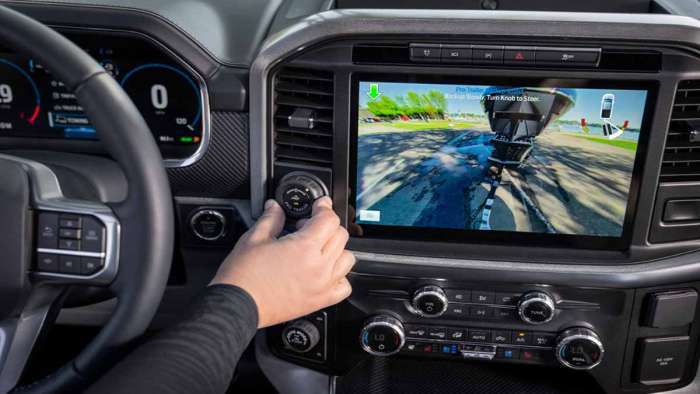
Level 1 Driver Assistant Systems
The Society of Automotive Engineers (SAE) defines Level 1 features as automating a single part of the driving experience, such as steering or acceleration/deceleration.
Some examples of Level 1 driver assistance features found in the 2021 Ford F-150, Ford Bronco and Mustang Mach-E include lane-keep assist, and auto high-beam headlamps.
“It is a privilege to extend and expand our long-standing collaboration with a company that is so committed to safety on behalf of its global customer base,” said Professor Amnon Shashua, president and CEO, Mobileye. “We look forward to working closely together to bring these functionalities to market in the full Ford product lineup.”
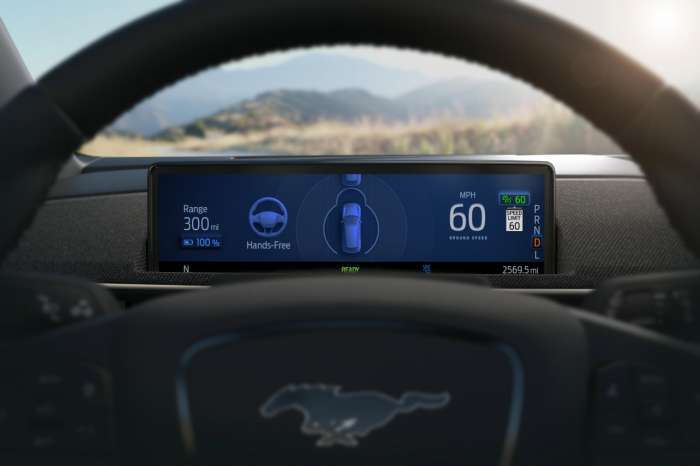
Level 2 Driver Assistant Systems
SAE defines Level 2 as any system that provides both steering and acceleration/braking support. Some examples of Level 2 assistance as found in many of the upcoming Ford vehicles include: pre-collision assist, emergency braking, adaptive cruise control with stop-and-go and lane centering and Active Drive Assist.
Ford announced that Active Drive Assist would be a key piece of technology in the new Bronco, F-150 and the Mustang Mach-E.
Active Drive Assist features an advanced driver-facing camera that tracks head position and driver eye gaze to enable hands-free driving when available. It allows owners on certain sections of pre-mapped, divided highways to drive with their hands off the steering wheel – if they continue to pay attention to the road ahead – granting them an additional level of comfort during long drives. The Active Drive Assist prep kit contains the hardware required for this feature, while the software to enable functionality, expected in the third quarter of the 2021 calendar year, will be delivered by over-the-air update or dealer visit. Separate payment will be required to activate full functionality at that time.
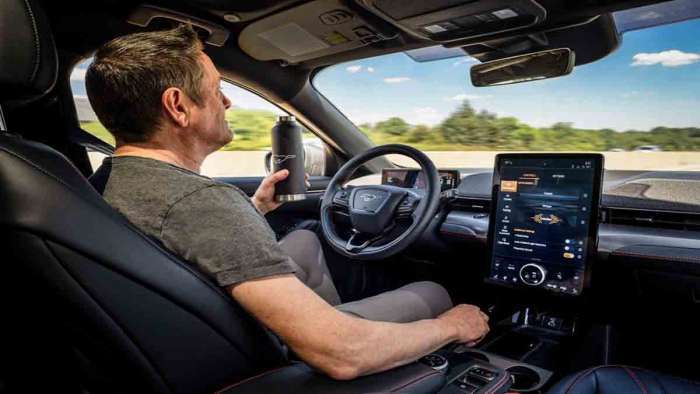
What This Means For the Consumer
As part of the high-volume agreement, new production vehicles will use Mobileye’s EyeQ computer chips and software to support features under the Ford Co-Pilot360 Technology. Used to help precisely identify what the windshield camera in a vehicle can see – including lane markings, traffic signs, pedestrians and other vehicles – Mobileye’s technology will support features such as Lane-Keeping System, Auto High-Beam headlamps, Pre-Collision Assist with Automatic Emergency Braking and Intelligent Adaptive Cruise Control, as well as Active Drive Assist hands-free driving coming to the all-new Mustang Mach-E and all-new F-150.
Ford will take advantage of Mobileye’s technology throughout the life of its next-generation production vehicles, including F-150 and Mustang Mach-E, as well as future products that offer advanced driver-assistance systems features.
While Ford and Mobileye have worked together for years, this marks the first time Ford is committing to the company’s technology for the entire lifecycle of its next-generation vehicles. Both parties will work with designated Ford Tier 1 providers to supply the technology for vehicle integration.
Additionally, Ford is evaluating the use of Roadbook in its vehicles. Roadbook uses anonymized, crowd-sourced data from vehicle cameras to build a high-definition map that can be accessed by vehicles and leveraged by driver-assist technology, including hands-free driving features like available Active Drive Assist.
New production Ford vehicles will use Mobileye’s EyeQ3 and EyeQ4 for Level 1 and Level 2 advanced driver-assistance systems platforms. The EyeQ family is set apart from the competition by its ability to support complex and computationally intense vision processing while maintaining low power consumption even when located on the windshield of a vehicle. Building on the capabilities of its predecessors, EyeQ4 can process multiple sensors and other inputs required for driver-assist features.
I know I sound like a broken record or heaven forbid, some kind of mouthpiece for Ford (I’m NOT), but I am a fan of this kind of technology. It does take some trust in the technology, but partnering with companies like Mobileye, who have mastered it, is a big step in the right direction for Ford.
Jimmy Dinsmore has been an automotive journalist for more than a decade and been a writer since the high school. His Driver’s Side column features new car reviews and runs in several newspapers throughout the country. He is also co-author of the book “Mustang by Design” and “Ford Trucks: A Unique Look at the Technical History of America’s Most Popular Truck”. Also, Jimmy works in the social media marketing world for a Canadian automotive training aid manufacturing company. Follow Jimmy on Facebook, Twitter, at his special Ford F-150 coverage on Twitter and LinkedIn. You can read the most of Jimmy's stories by searching Torque News Ford for daily Ford vehicle report.



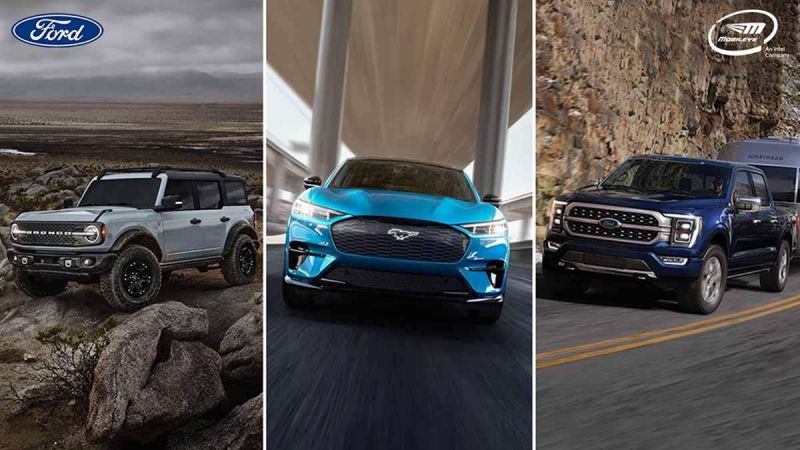






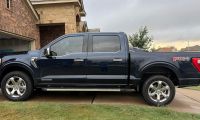


Comments
With havin so much content…
Permalink
With havin so much content and articles do you ever run into any problems of plagorism or copyright violation? My website has a lot of completely unique content Ive either created myself or outsourced but it seems a lot of it is popping it up all over the web without my authorization. Do you know any ways to help stop content from being stolen? Id really appreciate it.